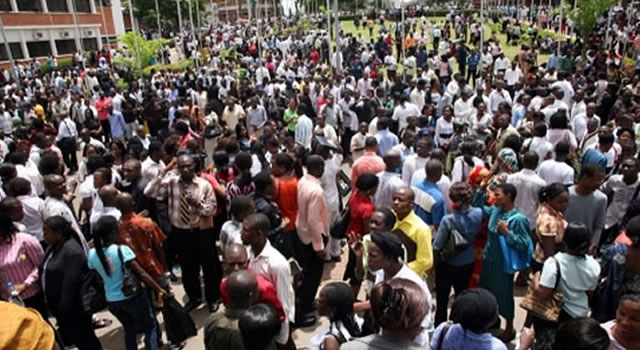The National Bureau of Statistics (NBS) reports that the unemployment rate in Nigeria decreased to 4.1 percent in the first quarter of 2023.
In its most recent report, the NBS stated that the unemployment rate as of the fourth quarter of 2020 was 33.3%.
The last survey was conducted using the 13th ICLS, which was birthed and adopted in 1982 at the International Conference of Labour Statisticians.
NBS had earlier announced that it would use a new methodology which aggregates the number of employed and unemployed persons in the country to get accurate data on labour force.
“Following guidelines adopted during the 19th International Conference of Labour Statisticians (ICLS) in Geneva in 2013, the aim of this re-evaluation was two-pronged. On one hand was to ensure that the methodology is in line with international best practice and locally relevant, and on the other hand, to ensure that a production process was robust enough to produce estimates on a sustainable basis (avoiding periodic gaps), and also, produce more labour market indicators and analysis that will inform government about the employment and job situation in Nigeria,” Adeniran had said.
READ ALSO: Nigeria’s unemployment rate to increase by 3 percent in 2023 – Report
Speaking during the launch of the new methodology in Abuja on Thursday, Adeniran said the new figure brings Nigeria’s Labour Survey in tandem with international standard.
He said the survey was conducted in collaboration with the World Bank and the International Labour Organisation and has been adopted by 26 countries in Africa.
He added that the figure for the fourth quarter of 2022 was 5.3 percent.
Adeniran said the new methodology considered employed persons as those who engaged in at least one hour of work during the last seven days the survey was conducted.
He stressed that the new figure was not to give the new government a good face but to bring up the method used to conduct labour survey in the country.
The old method defined those that are in the labour force to be from 15-64 years old but the new adopted one views it to be 15 and above that are willing, available, and able when the survey is conducted.
Also, those that would be categorized as unemployed would have worked at least one hour from the previous seven days the survey would be conducted which is a departure of the 20 hours the old method carried.
























